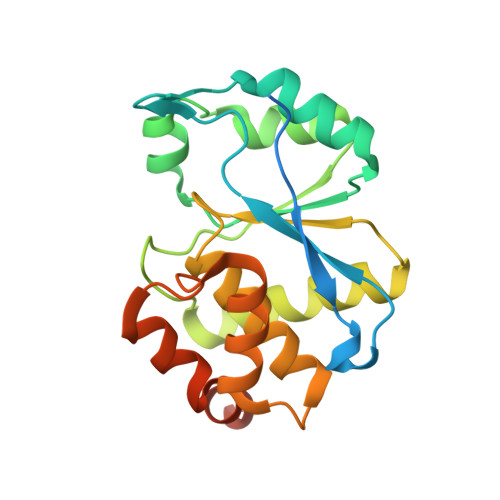Phosphoprotein-protein interactions revealed by the crystal structure of kinase-associated phosphatase in complex with phosphoCDK2.
Song, H., Hanlon, N., Brown, N.R., Noble, M.E., Johnson, L.N., Barford, D.(2001) Mol Cell 7: 615-626
- PubMed: 11463386
- DOI: https://doi.org/10.1016/s1097-2765(01)00208-8
- Primary Citation of Related Structures:
1FPZ, 1FQ1 - PubMed Abstract:
The CDK-interacting protein phosphatase KAP dephosphorylates phosphoThr-160 (pThr-160) of the CDK2 activation segment, the site of regulatory phosphorylation that is essential for kinase activity. Here we describe the crystal structure of KAP in association with pThr-160-CDK2, representing an example of a protein phosphatase in complex with its intact protein substrate. The major protein interface between the two molecules is formed by the C-terminal lobe of CDK2 and the C-terminal helix of KAP, regions remote from the kinase-activation segment and the KAP catalytic site. The kinase-activation segment interacts with the catalytic site of KAP almost entirely via the phosphate group of pThr-160. This interaction requires that the activation segment is unfolded and drawn away from the kinase molecule, inducing a conformation of CDK2 similar to the activated state observed in the CDK2/cyclin A complex.
- Department of Biochemistry, University of Oxford, United Kingdom.
Organizational Affiliation:

















